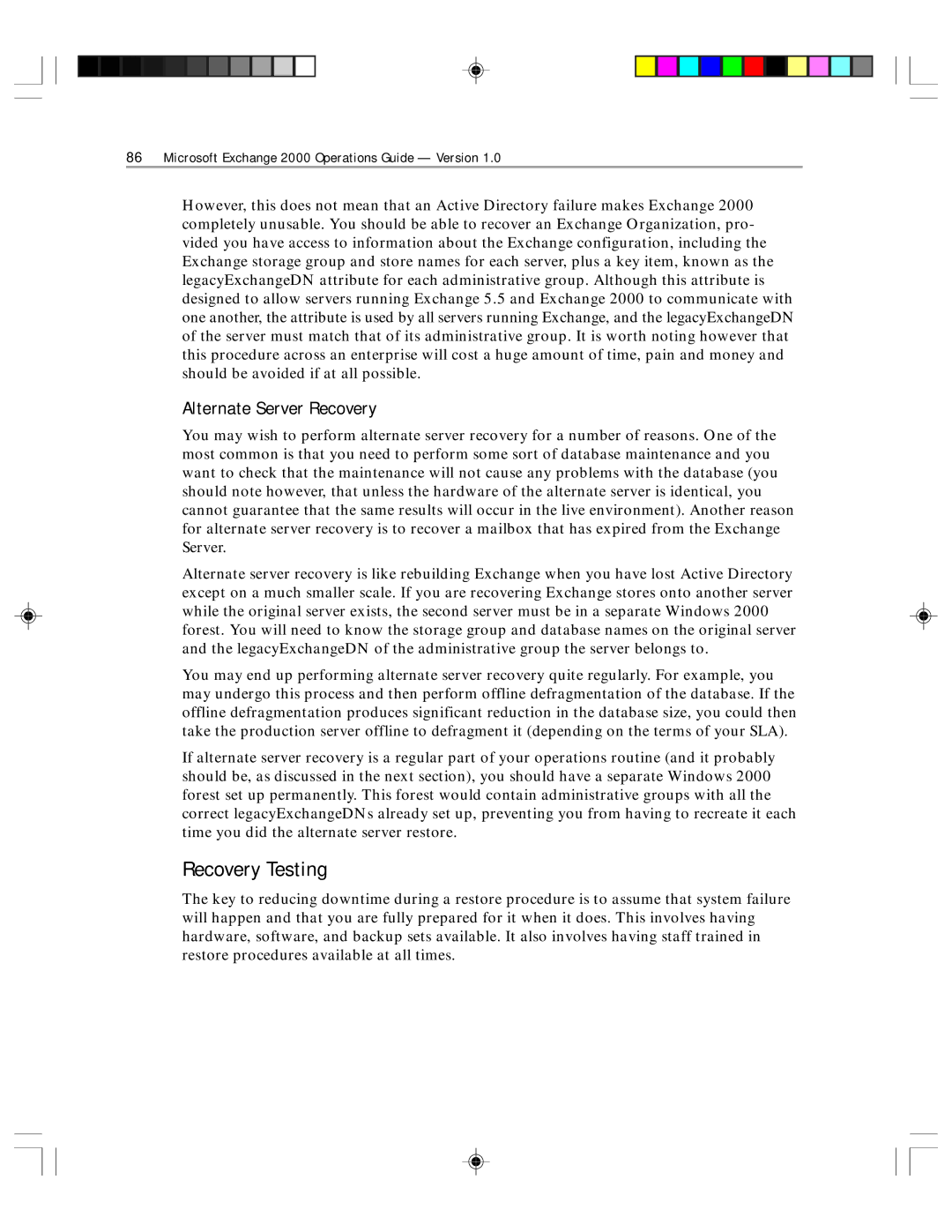
86Microsoft Exchange 2000 Operations Guide — Version 1.0
However, this does not mean that an Active Directory failure makes Exchange 2000 completely unusable. You should be able to recover an Exchange Organization, pro- vided you have access to information about the Exchange configuration, including the Exchange storage group and store names for each server, plus a key item, known as the legacyExchangeDN attribute for each administrative group. Although this attribute is designed to allow servers running Exchange 5.5 and Exchange 2000 to communicate with one another, the attribute is used by all servers running Exchange, and the legacyExchangeDN of the server must match that of its administrative group. It is worth noting however that this procedure across an enterprise will cost a huge amount of time, pain and money and should be avoided if at all possible.
Alternate Server Recovery
You may wish to perform alternate server recovery for a number of reasons. One of the most common is that you need to perform some sort of database maintenance and you want to check that the maintenance will not cause any problems with the database (you should note however, that unless the hardware of the alternate server is identical, you cannot guarantee that the same results will occur in the live environment). Another reason for alternate server recovery is to recover a mailbox that has expired from the Exchange Server.
Alternate server recovery is like rebuilding Exchange when you have lost Active Directory except on a much smaller scale. If you are recovering Exchange stores onto another server while the original server exists, the second server must be in a separate Windows 2000 forest. You will need to know the storage group and database names on the original server and the legacyExchangeDN of the administrative group the server belongs to.
You may end up performing alternate server recovery quite regularly. For example, you may undergo this process and then perform offline defragmentation of the database. If the offline defragmentation produces significant reduction in the database size, you could then take the production server offline to defragment it (depending on the terms of your SLA).
If alternate server recovery is a regular part of your operations routine (and it probably should be, as discussed in the next section), you should have a separate Windows 2000 forest set up permanently. This forest would contain administrative groups with all the correct legacyExchangeDNs already set up, preventing you from having to recreate it each time you did the alternate server restore.
Recovery Testing
The key to reducing downtime during a restore procedure is to assume that system failure will happen and that you are fully prepared for it when it does. This involves having hardware, software, and backup sets available. It also involves having staff trained in restore procedures available at all times.
